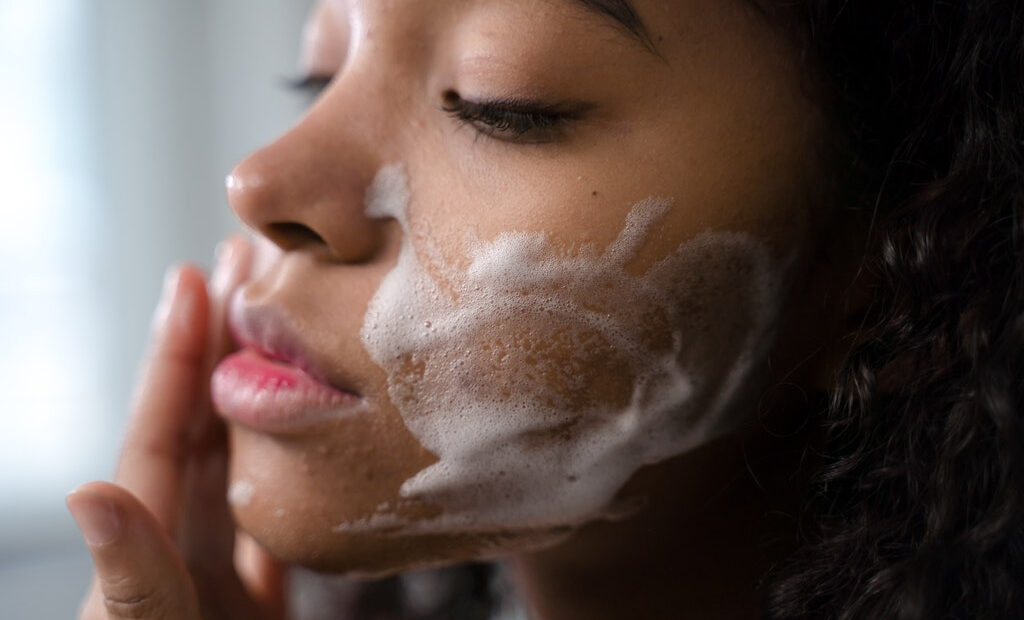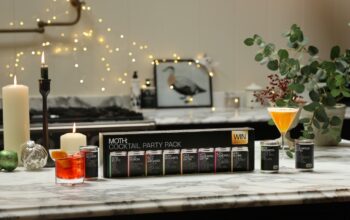Skincare 101: How cleansing foam works

Cleansing foams are deep-cleansing face cleansers that create a foamy, sudsy lather on the skin. While certain skin types may find washing with foams a little too abrasive, they are a fantastic solution for anyone with oily, acne-prone skin. By washing the face with cleansing foam, it’s possible to maintain skin feeling clean and fresh while removing excess debris and oil. However, it’s crucial to assess whether cleansing foam is the ideal face wash for a specific skin type before using one.
Foam formulas explained
The concept of cleansing foam is simple: they are cleansers that contain a foaming agent and bubble as they are applied. They are fantastic because of their ability to foam, as these particles can lift dirt and debris from pores’ deeper regions as they penetrate the epidermis, causing an even stronger cleaning action that leaves skin feeling refreshed.
Many believe cleansing foams inherently irritate skin by eliminating its natural oils, but that’s because many contemporary cleansers contain a synthetic substance called sodium laurel sulfate, or SLS. Foaming cream cleansers made with natural ingredients, which don’t contain SLS, might work well on skin types that have historically been sensitive to this kind of care.
Natural sugar is used in foam cleansers as an exfoliant, but it also has several other advantages. For example, this type of cleanser can kickstart collagen production, giving skin a younger, healthier appearance. Additional organic components, such as gluten-free colloidal oats, can soothe even the most sensitive or inflamed skin. Additionally, these ingredients can maintain moisture and raise the skin’s pH.
Purifying foaming cleansers are another example of this type of wash. This is the best option for those who want to clear up pores and reduce the risk of skin blemishes. It removes superficial dirt and dead skin by penetrating the pores with strong botanical enzymes. High-performance antioxidants are also often adde to strengthen and revive skin and tone.
What skin types do they work well with?
Due to their ability to penetrate the pores, cleansing foams are excellent for oily and acne-prone skin. A cleanser that can go deep inside pores and easily remove any dirt is necessary to eliminate acne or excessive oil or sebum. Cleansers that foam are ideal for this task. while also potentially being beneficial even if the user have sensitive skin.
Benefits
- A fresh, tingly sensation
- Good for acne-prone skin
- Sometimes suitable for sensitive skin
- Provides a deep clean
- Provides antioxidants to deeper skin layers
How cleansing foam works
That is ultimately up to the user! But those who are unsure about how to choose the best face wash should consider the following advice:
Even if a person has sensitive skin, starting with a cleansing foam is a good idea if they have never used any cleanser before or are creating a skincare routine from scratch. It’s likely that using a cleansing foam with kinder, natural chemicals won’t irritate the skin as much as some fear.
Additionally, cleansing foams are always preferable if the skin can withstand them due to their deep-cleansing abilities. It’s always an option to switch to a gel cleanser if a cleansing foam proves to be too much for skin and know that it will still do an excellent job of cleaning. It might be worth thinking about picking a face cleanser based on how it feels to use. Although foaming cleansers are a little harsher and feel more “burny” and tingly, many women find that they like that, once they get used to the intensity.
A cleanser should be chosen that addresses unique skin care requirements. For instance, it can be advantageous to concentrate on an exfoliating cleanser for spotless skin for those who have extremely oily or acne-prone skin. These cleaners contain chemicals specially made to remove dirt and other debris deep into the pores. This will assist in addressing both acne and oily skin issues at once.
However, anyone with normal skin who doesn’t experience breakouts or extremely oily skin can use a face wash containing nourishing or moisturising ingredients. For dry skin, cleansers containing a moisturiser are ideal since they reduce the need for additional cream or lotion later in the skincare routine. In this case, it’s important to make sure to combine a foamy or gel cleanser with additional premium skincare items. Using a facial cleanser alone won’t give the skin deserved. It will probably be necessary to combine the cleanser with a moisturising agent, a toner and a lotion or balm to soothe the skin. Fortunately, some cleansing foams include all these items and more, making it simple to find everything needed for a skincare routine in one place.
As the name suggests, a cleansing foam is a skin cleanser that foams up. A lot of water should be used to create the greatest lather possible. The wash functions by eliminating extra and excessive oil from the skin’s surface, avoiding the development of acne. With foaming cleansers, makeup can be removed from the face and grime from the pores. This kind of cleanser removes skin pollutants and avoids clogged pores to achieve a radiant appearance and feel.
A foaming cleanser is recommended for persons with oily skin, acne-prone skin, or skin that is still in its teenage years. It is not recommended on its own for people with dry or sensitive skin, and often with this kind of skin it’s advisable to choose a different cleanser. Cleansing foams should be used a maximum of twice daily, in the morning and at night.
Due to pollution and the advent of free radicals, people have progressively come to understand the significance of cleansers and other skincare products – mainly anti-aging ones. It is impossible to completely clean the skin of dirt and pollutants by simply washing with regular soap and water. Adding the most appropriate cleansers to a beauty regimen with take it to the next level. Users can choose between a foam cleanser and its cream alternative, depending on their skin type. In either case, it’s important to make a sensible decision and cherish that newfound beauty!
The editorial unit

























Facebook
Twitter
Instagram
YouTube
RSS